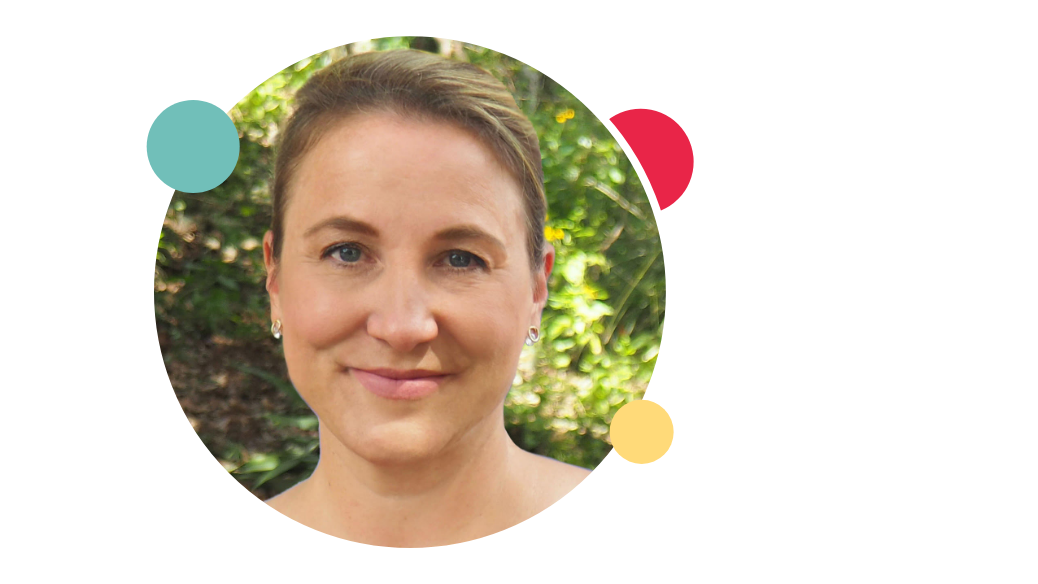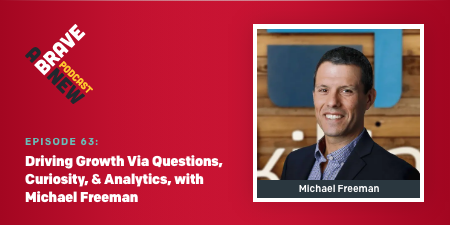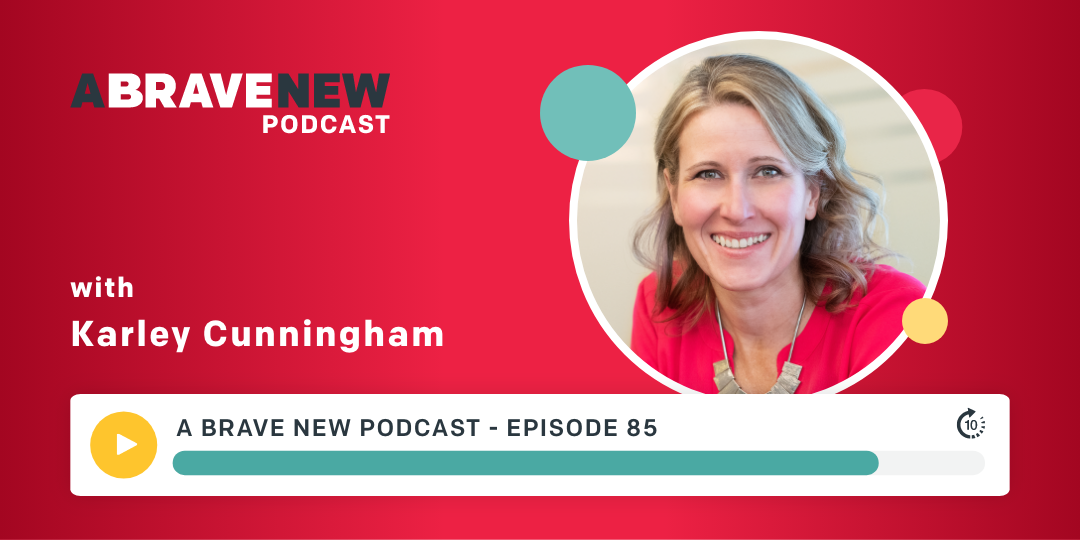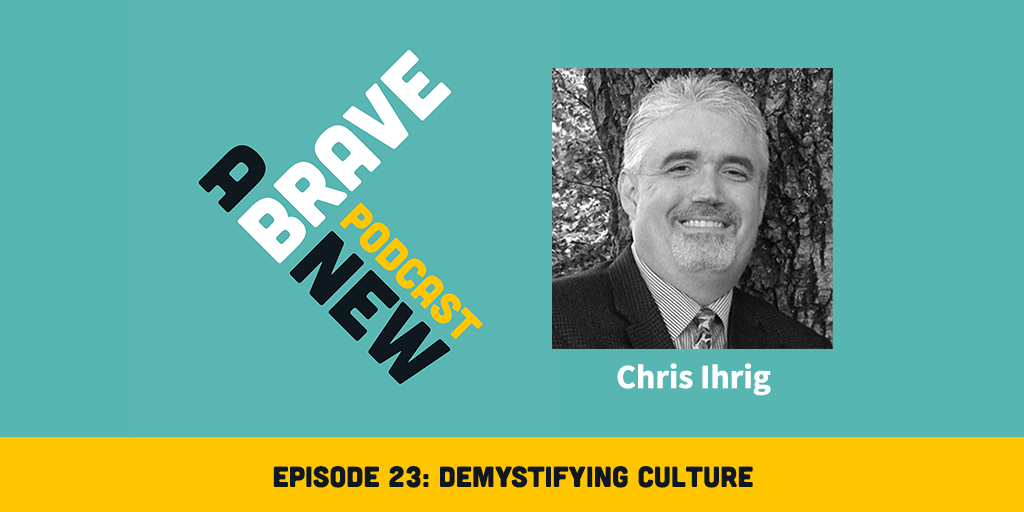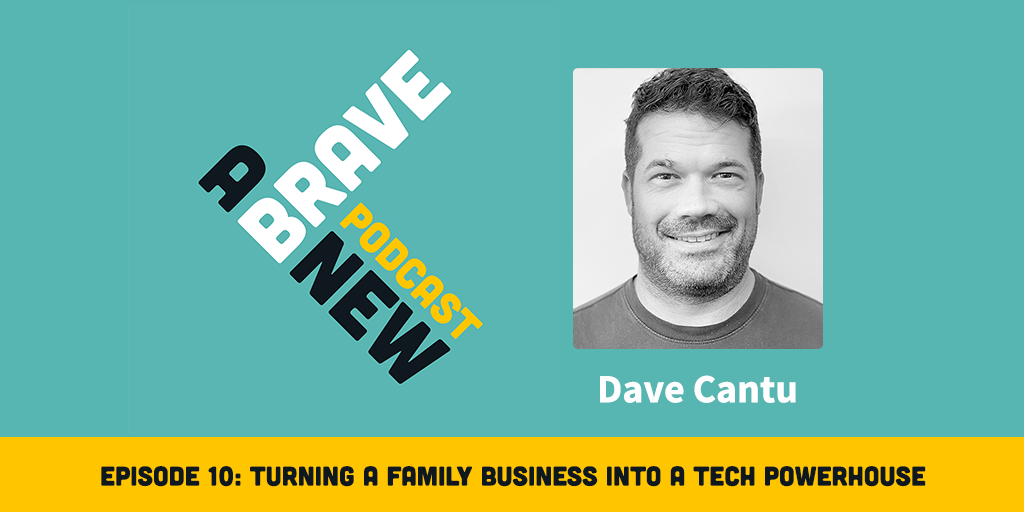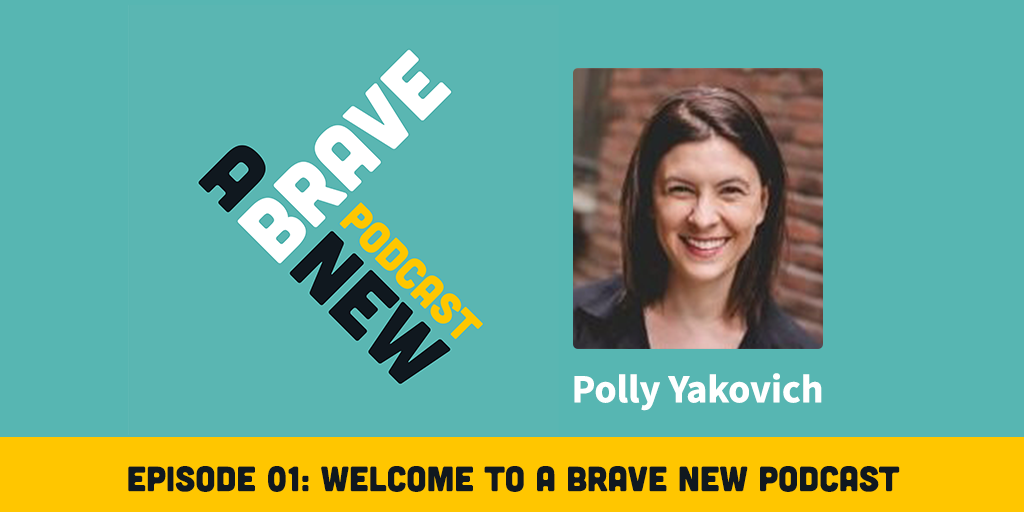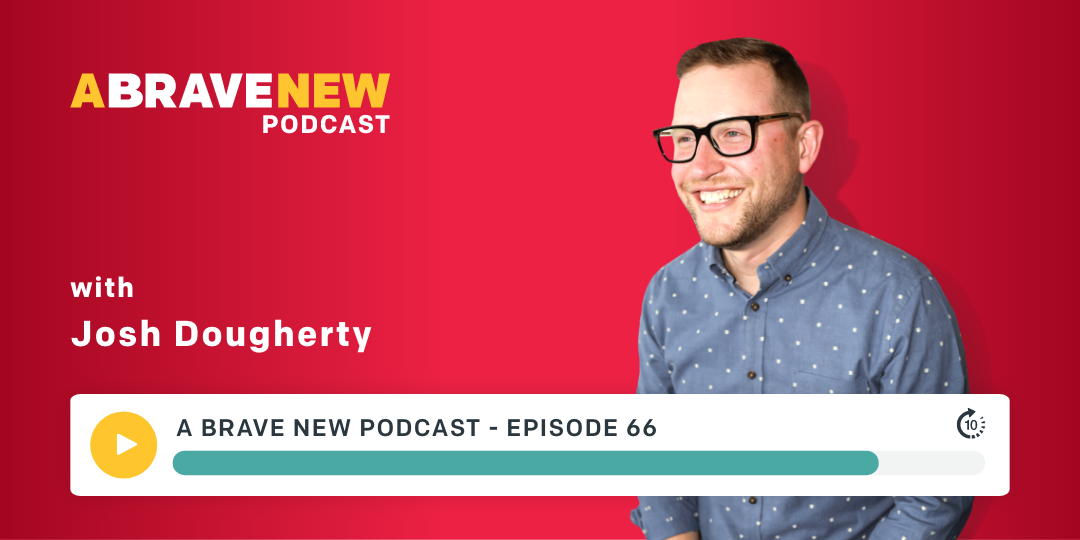With more than 20 years of experience in marketing, Kirsten Cutshall is the CEO of Austin-based Steel Advertising - a full-service ad agency specializing in marketing to the family. As a purpose-driven agency with a mission of "doing magic for the good guys" Steel' is a strategic partner, driven to produce obvious results and brands people love for who do good in our community - primarily health, education, and government programs. As a researcher and strategist, Kirsten frequently digs into the dynamics of making a decision within the family unit. Her background in Anthropology gives her specific insight into the cultural and generational shifts and how they affect the market.
Kirsten's recent clients include Texas A&M University System, Texas Health and Human Services, Kaiser Permanente and more. Kirsten’s past experience includes work for a broad base of Fortune 500 clients as Principal at Tocquigny Advertising, and prior to that at DDB Worldwide. She has a degree from Southern Methodist University and is a member of the American Anthropological Association. She is a frequent speaker on consumer trends, shifting media habits and brand experience creation.
What you’ll learn about in this episode:
- The importance of making technology a core part of your brand experience
- Why building your brand and generating demand at the same time are essential
- The biggest anxieties that marketers are feeling right now
- The trends in media planning and how AI is influencing the space
- How smaller healthcare brands can leverage directories as a long-tail organic traffic plan
- How businesses are leveraging video, and how to produce video more affordably
Additional resources:
- Josh Dougherty on LinkedIn
- Josh Dougherty’s speaking site
- Kirsten Cutshall on LinkedIn
- Steel Advertising’s Website
- A Brave New’s Website
Transcript
Josh Dougherty:
Welcome to A Brave New Podcast. This is a show about branding and marketing, but more than that, it's an exploration of what it takes to create brands that will be remembered and how marketing can be a catalyst for those brands' success. I'm Josh Dougherty, your host. Let's dive in.
Hello, welcome to the show today, I am really happy to have you join me, and today we're joined by a good friend, someone that we've collaborated with— between her agency and mine—many times, Kirsten Cutshall. Kirsten is with Steel Advertising out of Austin, Texas. She's been running her own agency for the last 24 years. They work in the areas of healthcare, higher education, and government. She really has a lot of wisdom in understanding what's going on in the market, what trends are happening. And she's a natural-born connector, so she hears a lot about the things that people are excited about, the competitive pressures they're feeling. So we're going to have a conversation today about marketing in general, where it is today, where it's going, what changes we're seeing, and hopefully you'll find the conversation really valuable. So without further ado, I'd like to bring her in.
Hi Kirsten, it's great to have you on the show today.
Kirsten Cutshall:
It's great to be here. Thanks, Josh.
Josh Dougherty:
Awesome. I know we've talked and spent so much time together, so I'm excited for people to have the chance to get to know you and hear a bit from you about the insights that you have in the world of marketing. But before we get started, I'd love to have you share a little bit about your story and your career path and how you've gotten to where you are today.
Kirsten Cutshall:
Okay. It's kind of a short story at the beginning because I've been at Steel for a very long time. But I started in the 1990s in media and interactive, and dabbling in account planning—which was something that some agencies had and some didn't at that time. But I started my career at one large agency after another from Mark USA to DDB Needham, well, they were called DDB Needham at the time, DDB, and then to Steel Advertising here in Austin. And it was really coming to Austin where I really got involved more in education, healthcare, government—some of the things that eventually became my passion.
But Steel came about because my husband and I were having two kids very quickly, and we decided we'd like to do our own thing, and he was on the interactive development side and I was on the advertising side of the business. So we thought, "Hey, we see where this stuff's going, it's all merging together. Let's start a new agency together to make sure that we do websites and marketing that is both technically solid and something that people really love." And so, we brought those two together and we've been doing Steel together for 24 years now.
Josh Dougherty:
It's amazing.
Kirsten Cutshall:
Yeah, it's been a good journey.
Josh Dougherty:
Yeah. And obviously I know you all from the Steel side of things because we've been in the same peer group with the Agency Management Institute for a number of years now. But I'd love to have you share a little bit more about Steel. I think you have a really unique DNA as an agency and you do cool work. So what's Steel all about, when you share it with people?
Kirsten Cutshall:
Well, I mean, when I give them the nutshell on us, I tell them that we are a purpose-driven ad agency with a mission to do magic for the good guys. And they always kind of look at me and I'm like, "Well, for us that magic means that we like to help education, healthcare, and government clients to do things that we believe in, that make the world a better place for all of us. So we're fortunate enough to really work with a passion."
Josh Dougherty:
Yeah. And I think that's why a lot of us get into the agency ownership realm. But it's cool that you've been able to actually ... It's one thing to be able to project that and say, yeah, that's what we're going to do, but I think you guys are able to live that out day to day as well.
Kirsten Cutshall:
Thank you.
Josh Dougherty:
Maybe that's over the 24 years you can kind of curate your client list to be able to work with who you want to.
Kirsten Cutshall:
Yeah, I think it does take time, and discipline, and you learn your lessons along the way, but we like to really do things that we're good at. It really helps you to feel really into integrity all the time when you know that any piece of advice coming out of your mouth has got years and years of experience in that field. I think it really makes you feel good.
Josh Dougherty:
I 100% agree. And a lot of our conversation today, we're going to talk about trends, we're going to talk about where things are going. And one of the reasons I was excited to have you on is because you are someone who's a natural connector, who's talking to a lot of people, and you hear a lot of trends. I think especially for us who run agencies, we get the benefit of having lots of conversations with folks. And so, sometimes if you're in-house, it's a little bit more difficult to do that. I was hoping we could start out by just talking about two specific things. First, as you've had conversations in the first few months of this year, what are some of the things that marketers you're talking to are most excited about or what are they thinking about right now?
Kirsten Cutshall:
Well, one of them that I know everybody's thinking about right now is how technology experience is actually part of the brand. So there've been so many innovations since the P word, and I think that people got those technology solutions in place to be able to relate to their audiences differently. And now it's maturing to the point where everybody's going, "Okay, what are my opportunities to make sure that this is a good experience and audit it? And then how do I apply my brand to it, and then how do I advance my brand through it?" So people are making really good choices now, a lot of times they're going to their second software solution so they can have branded chat, so they can have branded help desks, so they can have branded phone lines, and everything really to embody that as part of marketing. And I think at first it was just like, "Hey, this is an IT problem," but now marketing is understanding that they're really not going to keep people if they're frustrated. That's the bare minimum, but they're really going to win people and retain people if they are branding that experience. So that's number one.
And then the second thing that's going on right now is the pendulum kind of swings back and forth; are you going to do branding or are you going to do demand generation? You're going to do branding demand generation, and really with so many of the things that are available that make things more efficient now, you don't have to choose So you can do branding while you're generating demand. And so, there's a lot more demand generation work that is more sophisticated, and it's a higher quality than it used to be. So that would be the other big thing that I see people wanting to talk about.
Josh Dougherty:
Yeah, that was really resonating when you talked about technology experience as a part of the brand and how you turn that into a branded thing. I think we're seeing that as well with people, and how they're first and second wave artificial intelligence adoption as well. Because I think you see a lot of folks saying, "Oh, we’ve got to incorporate artificial intelligence, and it doesn't really matter if it's good or not, it's just we need to have it functional." And now they're starting to ask, "Oh my gosh, we dove headfirst into this generative AI thing and now some of the content that we maybe decided to create sounds just like everyone else. And maybe we need to take a step back and say, "How do we leverage this tool in a way that both gets the efficiency I think that it can provide, but it also matches our brand and feels like us?" Because that's maybe something—in the rush to be a quick adopter—got left by the wayside, which is maybe the natural evolution of how you adopt technology in marketing anyways.
Kirsten Cutshall:
I mean you nailed it on that comment about content. There are so many tools right now, but there's nothing replacing somebody looking at it and saying, "Is that thought leadership or is that just spewing a bunch of thoughts?"
Josh Dougherty:
Yep. Absolutely. What about in the area of worry? Those are the things people are excited about—how do we bring it? We can do some strategy while we're generating demand, we can be creating some branded experiences, but if people are worried about anything, what are the things that you're hearing from folks? What are they concerned about?
Kirsten Cutshall:
It is related to what we just talked about, but the concern comes out differently and that is, I have heard more people wanting to look at their competition, do a formal competitive review, or being in a meeting and just reacting to, "Did you see what our competition's doing?" I think that the competitive pressure that's out there right now has been just not paid attention to. Everybody's been surviving, everybody's been innovating, everybody's doing all these cool things, and all of a sudden, I mean this year, things are starting to sort of go, "Okay, this is the way everything's going to be. And my competition rebranded." I mean, because there's been tons of rebranding or, "My competition has improved their technology experience this way." And so right now I have not heard clients consistently talk about their competitors as much as I have in the last quarter.
Josh Dougherty:
Yeah, I've had that same experience. I've also had people all of a sudden realize they've gotten maybe—I mean we play in slightly different but related areas—where they've seen a lot of consolidation, and so maybe a couple of competitors have gotten a significant amount, infusion of cash to be able to do more. And they're thinking, "Oh my gosh, how do I look at this and how do I compete against someone who's all of a sudden bigger than me and stronger than me, and I have to think on my toes differently about how to make things work."
Kirsten Cutshall:
Yeah, I think again, you nailed it with the whole, there's been people that have gotten cash infusions, whether it's by a grant that's come out or an organization that's decided to make a capital investment in marketing that year. There's just been so much big substantial change that people are going, "Hey, I thought I knew my landscape and I don't now." So they're really having to stop and take an inventory this year, in a way that they haven't probably had to focus on so much.
Josh Dougherty:
I'm interested too. Another worry that I've heard from folks is, "We're trying to use tactics that we used and worked two years ago and all of a sudden they don't perform like they used to." And we'll get into a little bit of this as we talk about trends, but have you heard that from folks as well where they're facing more competitive pressure, but they're also all of a sudden having to think about their marketing mix differently than they maybe did previously?
Kirsten Cutshall:
Yeah, absolutely. Also, the concept of needing to have a broad marketing mix was really kind of an obsession several years ago, and people are more content going and sort of honing that marketing mix down. And when they do, they're looking back at things and going, "Hey, we thought that was pretty good because it was better than the benchmark for all five of the things that we were doing." But now they're looking at it and going, "But why were we doing those two? Because they weren't nearly as efficient as the other three." You could put all the money into that. So, both a change in how it's actually performing, but also a willingness to be disciplined and go in only the most efficient areas as opposed to just feeling like they needed to be broad.
Josh Dougherty:
Yep. And I think that's driven by financial pressures across the board too, which I mean, you talked about the pandemic briefly. Financial pressures do the same thing; it really tightens our willingness or brings into focus our willingness to innovate in ways or think differently than we have.
Kirsten Cutshall:
And there's financial acumen that has happened as well. I mean, as we've lived in the age of metrics for so much longer, people just have a higher level of financial acumen when they're reviewing their marketing mix. And so, I think that we're going to continue to see that, where it's table stakes, that people have an understanding of efficiency in that way.
Josh Dougherty:
Totally. Great, well, I'd like to transition the conversation to talk about a few trends, and because you, as an agency of expertise in media planning, do a lot of work in building websites that are going to be search friendly, how do we help people be found? You're doing creative work, so I'd love to dive into some trends there and talk about media planning first. What are some of those trends or changes as the media planning space is changing, the paid media space is changing, especially with the advent of AI, how are you seeing this area evolve and what should marketers be thinking about here, do you think?
Kirsten Cutshall:
Watching media planning and media buying right now, it's fun for me, actually. I think the biggest trend is watching media buyers and our clients become more open to a broad use of AI and take down some of the walls that limit AI's ability. So we're seeing clients—for instance, in the university space, it would be for new students, in the healthcare space, it would be for new patients—where instead of setting up a buy with all of these segmented budgets, the budget run across all of the different audience segments and letting it fully optimize without obstruction. And then we're able to get much more efficient overall because we have optimized over a wider set of criteria and we're able to get learning out of it. And that's really exciting because then you can say, "Okay, in the future, if you really decide that you only want this specific subsegment and you allocate a portion of your budget for that, it will never reach the efficiency of this other one." But if you just really want to fill up your seats and you look at it as a lead, as a lead, we can let AI do a ton of the work for us and they will actually find and make the market, which can be really cool.
Josh Dougherty:
Yep. How does this impact the timeframe to seeing it? There's always an optimization phase at the beginning of a buy, right? To start driving the results you need does this lengthen or shorten the timeframe of getting things up and running and rolling?
Kirsten Cutshall:
Actually, it tends to be easier to get things up and running this way, because you actually are putting all of them in and you're sharing your budget across all of them. But if you really are fixed on wanting to ... The part that gets tricky is when you want to match your old metrics to your new metrics and you need to do them and have some ways that they line up, sometimes that can prolong the period a little bit. And then I think optimization overall, it happens at about the same rate if your budget is similar, but if you are changing the relationship between your budget and the number of audiences, it can actually slow it down just a little bit.
Josh Dougherty:
So to dig a little bit deeper into this, sorry, just asking lots of questions, but as you think about working on this with your clients, how are they justifying, or how do they make the case maybe to people who are looking at this more of like a dollars and cents buy, right? Like, a marketer will understand this approach, but when you get out of the director of marketing or the VP of marketing and they're having to maybe justify the approach on a larger buy to their c-suite, what's the story there that helps?
Kirsten Cutshall:
Well, honestly, charts and graphs. Yeah, I mean, honestly sitting there and explaining it in words has not been that successful for me. But if I can get with my partner in marketing on my client side, and we can say, "Okay, so they're not going to understand this unless we show them. If we segment the budget into five different pies, and we know what the benchmarks for each of those pies are, this is the maximum number of new patients they're going to see or the maximum number of new students they're going to see. If we remove these barriers and allow it to optimize, yes, they're going to get more of one type than another, but they're going to have this many net patients, this many net students," then they can talk to their other audience and say, "Okay, so do you care? Is a lead a lead, or a person a person, or do you need to support this one particular program because maybe you've got restricted funds, like this is being provided by the College of Education, or this is being provided by the Women's Health Center." So we have to use that money on their business. And if we can get away from having to isolate money for any reason other than it's a restricted fund, usually they're like, "I want more bodies."
Josh Dougherty:
Yeah, that makes sense.
Kirsten Cutshall:
So I think that really without a chart, I haven't been able to do it.
Josh Dougherty:
Yeah, I don't think most people want to see data of results they're going to get. As we go, like letting AI optimize, so if we segue to the area of SEO, we're fighting a little bit of AI, getting really smart on search engines, right? And so it's getting harder and harder to win at that game. And not that you can't, you can still do that, but in some spaces where you play, I know healthcare, there's big players that have tons of content online already, right? Probably in education as well. So how are you helping your clients win as algorithms get so much smarter, there's big players that are, I think crowding out the smaller players inside of all the spaces you play in. What are you doing to make that work today?
Kirsten Cutshall:
So that is the big trend. The trend is right now that the aggregators and the review sites are knocking individual brands out of top spaces in healthcare and in education. And so, instead of trying to go against the entire industry, our approach has been to work with the problem, so to speak.
So after our clients will invest enough into SEO to make sure that, basically, their site is easily findable when there is some reference to their brand or some reference to something that they are maybe the unique and only one that has. Beyond that, we're moving SEO dollars from trying to get you to the top of the list by making your site rise, removing those dollars instead into buying our way into those directories and making sure that we show up and the person that's already at top. So we've spent a lot of time with clients, and I've got one in healthcare specifically that's been very, very successful at this that has entirely stopped their pay-per-click campaign now and their SEO efforts and has moved it all into Healthgrades, Zocdoc, those kind of things, Psychology Today, those places where they have lists that are already at the top and they're filled with your competition, yes, but right now there aren't enough people that are going and taking care of their image in those spaces. So a little bit of work goes a long way to you being the best guy every time someone searches those directories.
So that's kind of what we're doing is, like I said, going with the problem and saying, "Okay, this is the new place to be. We're going to be the best at being there."
Josh Dougherty:
What are some of the tips you have for people if they're going to go after that? What are the things that you should do to make yourself look the freshest in those spaces, other than, I mean, a lot of it is pay to play, so you have to pay to be able to get top listings.
Kirsten Cutshall:
But if you want to look the freshest, you have to be the freshest, which means you are constantly involved with it. So these are not a set it and forget it sort of situation. And the people that are doing really well at this, I mean, it is much like, for instance, even the insurance directories, right? If you put your information in there, it's outdated very quickly. Or you're looking through your peers that are in these directories and you suddenly are noticing that they're putting something in there that you're not. I mean, it just takes time. And so, what we're finding is that having somebody, either on the client staff, or a low level contractor that is really constantly improving these, submitting and improving these and then reporting on that just like you would any other medium, but that's really the key to just killing it on these platforms.
Josh Dougherty:
Yeah, that makes sense. I mean, we've even seen that I'm working with a client right now where we have an extra focus on their Google My Business profile, which isn't somewhere we would've spent a ton of time in the past. We would've gotten it looking good, but now we're talking about how do we post regular updates there? And how do you do this? Because why fight the fact that Google's going to make this the top thing even above your organic search results, right?
Kirsten Cutshall:
Yeah. Their take on you is going to come up higher than what you have on yourself, so you might as well spend some time doing it. And it's funny because I don't think people have thought of this as a medium before. Or they've thought, "I'm just sort of polishing my business card online." No, I mean, this is a medium now.
Josh Dougherty:
This is how people are making decisions.
Kirsten Cutshall:
Right. This is kind of somewhere between SEO and PPC and it's a real medium. Especially, and if you can get it at enough scale, you're doing great. I mean, if you think about a practice too; you're doing it for every one of the doctors there and you're making sure that you have every one of their specialties up to date and you're doing it, you know, it's a lot of work.
Josh Dougherty:
Yeah. But it gives you that long tail that everyone's wanted in SEO, right? Because if you have 50 providers up in these things with updated profiles, et cetera, you have a lot of long tail ability to attract people.
Kirsten Cutshall:
Yeah, well, a lot of ability to do it through that. And then the other thing is that as a byproduct, it's also creating more links that's helping your normal organic SEO, so it's good health all around for your digital footprint.
Josh Dougherty:
Awesome. So, shifting the conversation a little bit, the one other trend I wanted to talk about, which I know you guys think about, you've done a decent amount of work here, is in the area of video. This is another super important place because it impacts visibility and social. People are engaging with video content way more than they are with other content. Can you share a little bit about how you're using video now? What are the most effective methods or maybe use cases you've had for it?
Kirsten Cutshall:
Yeah, yeah. So video is exploding in its use cases, I think would be the best way. I mean, we all know that you could put video on your social media, on your website, you can even put video elements in your chat experiences, but it's like, what are we doing with video? And I think there's this huge trend right now to do two things. One is to be very helpful with video, because I think we all are video learners at this point. And then the other thing is to try to find a way to give them a glimpse into the behind the scenes on the brand, right?
So when I talk about the behind the scenes sort of thing, that is, take a tour, meet the professor, not just the tour the school, literally get a little bit about the professor. Meet the doctor, just get to see and assess them as a person because you don't really know if they're going to be able to teach you well, you don't really know if they're going to be able to heal you, but you can kind of get that personal feeling of comfort or lack of comfort.
So along the lines of having them peek behind the scenes, we're seeing more facilities tours, we're seeing more, "Here's what the procedure looks like or day of procedure will look like.” And then on the other side of that, we're seeing things that are just really helpful. So we're seeing more like, again, tours would fall in this category, but explainers and how to fill out your form for FAFSA, how to submit this to insurance on your own, or whatever. There are a lot of just easy ways to help people that feel really nice. And the great thing about them is then they post the script underneath them, and that's going to help again with the SEO of the long tail. But just overall, it brands up when people just feel like it's easy to interact with you, it's easy to hear what you're saying. I'm not reading a huge thing, somebody is just popping up on video and telling me what to do and showing me where to fill it out, you know?
Josh Dougherty:
Yeah. When we, all of us, spend our time on Facebook, Instagram, TikTok, looking at reels all day long, we expect it now that you're going to learn something via video.
Kirsten Cutshall:
Yeah.
Josh Dougherty:
So I think most people have bought into that idea, but it also feels, especially if you're a small marketing team, I think it can feel really expensive and hard to get into. So what are creative ways that you've seen folks exploring doing video in a more affordable way, maybe or maybe in the most efficient way? Because I don't think it ever can be ... It does take time and money to do, but-
Kirsten Cutshall:
It does. It does. And so the first thing is that you're going to be noticing on your television set probably pretty soon too, but there's just a lot more animation at play. AI is advancing our abilities with animation faster than it is our abilities to do believable and accessible video translations. But a lot of animation, that's just a trend in general, and there's just so much more animation that is possible to do in your own desktop tools. So a lot of agencies, especially small agencies, are suddenly able to do things that they used to have to hire a subcontractor for. And then, just the fact that right now we're all kind of seeing animation so much as a trend means that we're all okay with it. So whereas you might really have felt like you had to shoot something before, you don't.
Another thing that you can do is the influencer market is sort of having a shakeout right now too. And there's these really big influencers and then there's micro influencers. And a lot of people are saying, "I didn't really get much out of my engagement with a micro influencer that I could measure." Well, one of the other outcomes you can have from dealing with influencers is you can actually have them produce videos for you. So you can have them be the talent, you can have them produce it, you can have them go through the whole process of doing a how-to video for you, and it does create an engagement with their community, but more importantly, they're just a really inexpensive way to do something that's at a level that we're all used to seeing on social media now. So it's a great way to get a social media video that looks really fresh and is not very expensive.
And then, the other thing is that because there's so many tools and the cost of production is so low right now, a lot of media companies are just including production with your buy. So depending on who you're buying from, you might actually have a media company that will say, "We'll throw in a certain amount of production for you if you write the script." Or if you have an agency, that agency can direct them but it's free production resources, so-
Josh Dougherty:
Okay, so ask for extras, is the lesson there.
Kirsten Cutshall:
You ask for extras, for sure. And they've been doing this for a long time, but the production quality is so much better. We don't have to be ashamed to take it up on them anymore as creatives, you know?
Josh Dougherty:
Yeah, exactly. Cool. Well, this has been a really rich conversation. Hearing new twists on old tactics is really interesting because we aren't really shifting the things we're doing, but how we're doing them has to really change to survive in a new world, honestly, in my opinion. So it's really helpful to hear your take on that. As we close out the conversation, I'd love to ask you a question I ask everyone, and I know we were joking before we started recording, but this is a hard question, what do you think your superpower is?
Kirsten Cutshall:
Okay, I'm so glad that you let me know this question was coming because I don't think I could have answered it right off, but my superpower is I can generate more alternatives to problems faster than anybody I know. So they're not all good ideas, but the way my mind works is if a challenge goes up, I am immediately thinking about 10 routes around that challenge, and they just pop into my head instantaneously, which is a lot of fun when you have people that are really good brainstormers because you feel free to let them out. And then if you have a good team, then you're going through and saying, "Okay, these are good and these are bad."
Josh Dougherty:
100%, but I can relate to this having worked with you and partnered with you on a number of things. Like when we run into an issue, we just think, "Okay, what's the way around this?" And here, immediately there's three or four ideas because I think you do embody that the situation is changing. Let's go with the change and figure out how to adjust, right? Which is a really strong skill to have.
Kirsten Cutshall:
Well, I thank you. And I have to say that I'm really glad this is a podcast so everybody can't see how many times I rolled my eyes when you're complimenting me. You're very nice.
Josh Dougherty:
Well, as we close out, how can people connect with you, Kirsten? What's the best way for them to keep up to date on what you're doing?
Kirsten Cutshall:
Well, I actually am very active on LinkedIn, just because I do tend to really like to stay connected to people. So I'm very active on LinkedIn and I'm Kirsten Cutshall at Steel Advertising on LinkedIn. But also, if anybody has a specific topic, I try and always make my cellphone available for everybody. So I'm completely happy with anybody that wants to just give me a call on my cellphone and we can post that with the video.
Josh Dougherty:
Yeah, we'll put both the link to your LinkedIn and cell number on the show notes. People can find that if they want to get in touch.
Kirsten Cutshall:
If they want to get in touch. I just love meeting people and talking shop.
Josh Dougherty:
Yeah. Awesome. Well, thanks so much for doing that with us today. I really appreciate you coming on the show.
Kirsten Cutshall:
I appreciate you asking me and I just love geeking out with you.
Josh Dougherty:
All right.
Kirsten Cutshall:
Bye-bye.
Josh Dougherty:
We did it. Bye.
Kirsten Cutshall:
Yay!
Josh Dougherty:
Thanks for listening to this episode of A Brave New Podcast. Go to abravenew.com for more resources and advice on all things brand and marketing. If you enjoyed this episode, show us some love by subscribing, rating, and reviewing A Brave New Podcast wherever you listen to your podcasts. A Brave New Podcast is created by A Brave New, a brand and marketing agency in Seattle, Washington. Our producer is Rob Gregerson of Legato Productions.
Similar Articles
OCT 11, 2021

The Beginner’s Guide to Generating Inbound Leads
Marketing doesn’t have to be painfully intrusive, like getting yet another telemarketing call right when you sit down to dinner with your family.
OCT 11, 2021

The Beginner’s Guide to Generating Inbound Leads
Marketing doesn’t have to be painfully intrusive, like getting yet another telemarketing call right when you sit down to dinner with your family.

